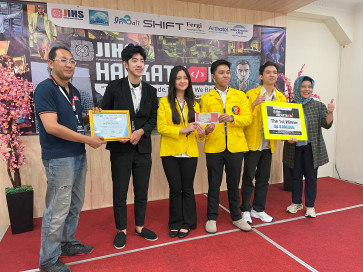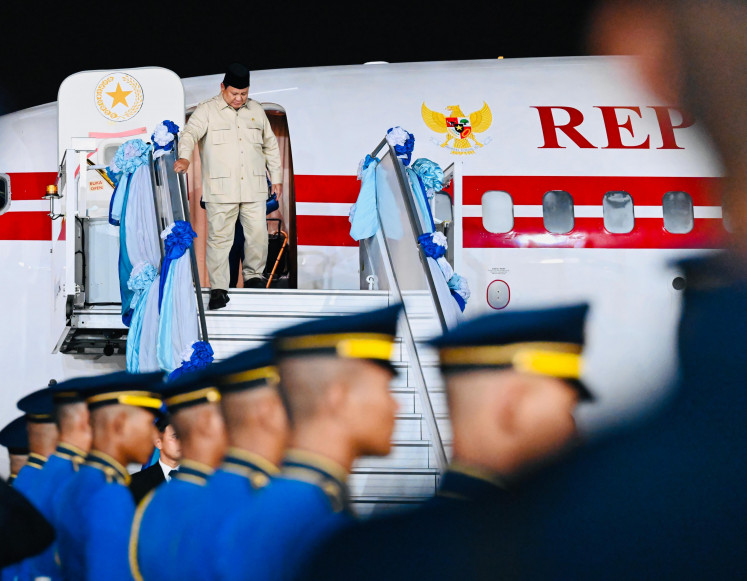Stigmatized comic creators face hurdles in industry
Being a comic creator in Indonesia is challenging as many people do not consider it a legitimate career path
Change text size
Gift Premium Articles
to Anyone

B
eing a comic creator in Indonesia is challenging as many people do not consider it a legitimate career path. Furthermore, the difficulties comic artists face in networking due to the tendency for them to be introverts only exacerbates the stigma.
One artist, best known as Mimi N. from FutarinoKizuna, based in Tangerang, said that even though it was not necessarily difficult to reach out to other artists, they “aren’t close enough with each other to meet up frequently — [they are] more like acquaintances”.
According to Mimi, about 80 percent of local artists are introverted. “They don’t like competition.”
Mimi has been drawing for more than 10 years, and now prints and sells her own comics independently.
She previously published a digital version of her comics online. However, her website was marked as spam and blocked to the public, forcing her to take a more traditional route. Throughout all this, she has managed to gain a local following.
Mimi said she was not familiar with any local communities for comic artists, as they tended to stay within their own circles. “I think they encourage each other, but since they’re introverted, they do it within their own circles. If there is some large group, it is to allow people to gather to promote their art and there is nothing to really discuss.”
Mimi gives people free access to use and print her original works because she feels that if she were to forbid anyone from doing so, people would steal them regardless. Local readers “tend to read free stuff, without buying or supporting it”, she said.
Another artist who specializes in comics, Feliciani Yap, agreed, saying that the lack of support came from traditional mindsets.
“A mindset is pretty hard to change, since it’s something that’s embedded in one for years.” Feliciani said.
Another artist, who wished to be identified as N, said that the lack of awareness was one of the reasons why the Indonesian comic industry could not develop.
“I agree it’s about mindset. I hope the government can support us too, but maybe they need to change the public’s perspective about artists,” N said.
However, fellow comic artist Ignatia Naito argued that there were in fact communities for comic artists in Jakarta, if one only looked online on sites such as Facebook, Deviantart and Tumblr.
According to Naito, the biggest community of artists could be found on a Facebook page titled “Mangaka Indonesia” and almost all of the artists that meet up in person in Jakarta come from the group.
“They gather together at special events like Comifuro [Comic Forum],” Naito said, referring to an annual comic exhibition.
Another comic artist, Anastasia Zefanya, said she felt that support for local artists should start at home, as it was hard for a proper community to develop when artists were being told by their own parents that their work was not worth the time and effort.
“My parents aren’t supportive at all and keep telling me that my job won’t make any money.” Anastasia said, adding that even after years of living independently, her parents still refused to admit that she could earn a living as a comic creator.
According to Anastasia, the Jakarta comic scene itself was also lacking.
“While there are a few comics with unique ideas that are published officially, the amount is still lacking compared to the usual, standard romance or slice of life genres. I find local readers often ask where the romance is in some webtoons that I come across. I admit that I also get messages from readers asking whether there will be a love interest for my protagonist or elements of romance in general in my comics.”
With online comics now becoming more prominent than ever, Mimi feels that, above all, it is the local support that is missing.
“Local people see us as freelancers and comic artists are unemployed people because we stay at home all the time.” Mimi said, adding that alongside the lack of support from other artists in the physical sense, her concepts were always being interfered with by the local publisher she worked with. (acr)









